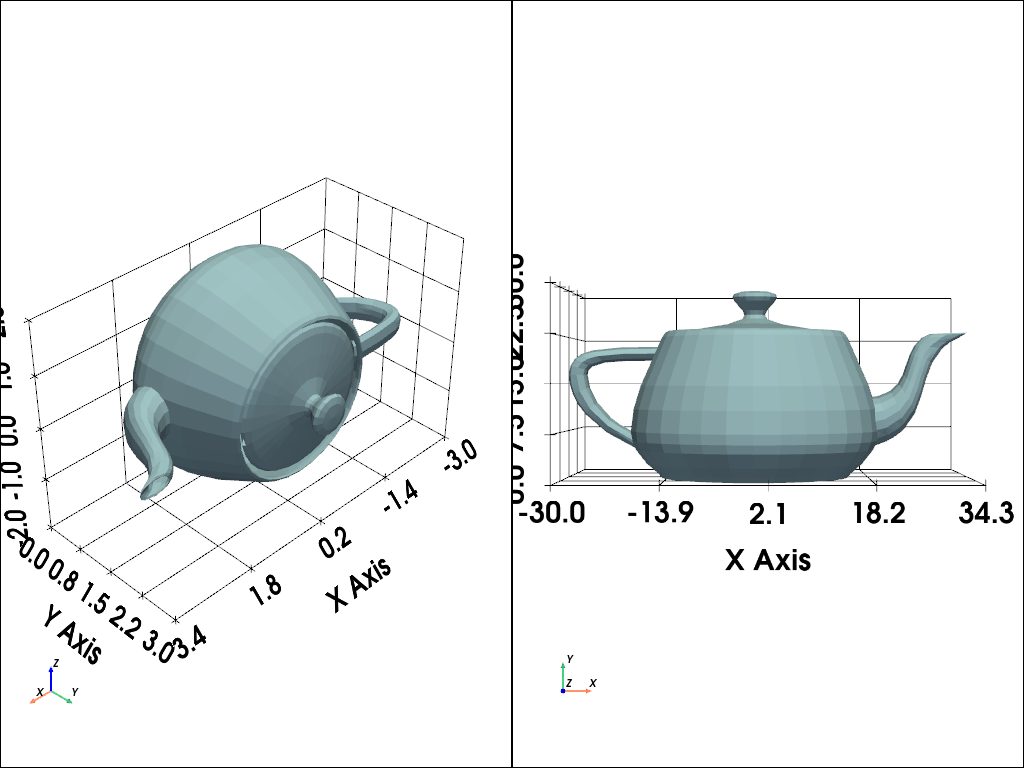pyvista.DataObjectFilters.scale#
- DataObjectFilters.scale(
- xyz: float | VectorLike[float],
- transform_all_input_vectors: bool = False,
- inplace: bool = False,
- point: VectorLike[float] | None = None,
メッシュをスケールします.
注釈
See also the notes at
transform()which is used by this filter under the hood.- パラメータ:
- xyz
float|VectorLike[float] スカラー,またはベクトルで,x, y, z 方向のスケールファクターを定義します.
- transform_all_input_vectorsbool, default:
False Trueの時,全ての入力ベクトルは変換される.それ以外の場合は,ポイント,法線,およびアクティブなベクトルだけが変換されます.- inplacebool, default:
False in-placeメッシュを更新します.
- point
VectorLike[float],optional 拡大縮小する点.デフォルトは原点です.
- xyz
- 戻り値:
DataSet|MultiBlockScaled dataset. Return type matches input unless input dataset is a
RectilinearGrid, in which case the output datatype is aStructuredGrid.
参考
pyvista.Transform.scaleスケール行列と変換を連結します。
例
>>> import pyvista as pv >>> from pyvista import examples >>> mesh1 = examples.download_teapot() >>> mesh2 = mesh1.scale([10.0, 10.0, 10.0], inplace=False)
Plot meshes side-by-side
>>> pl = pv.Plotter(shape=(1, 2)) >>> # Create plot with unscaled mesh >>> pl.subplot(0, 0) >>> _ = pl.add_mesh(mesh1) >>> pl.show_axes() >>> _ = pl.show_grid() >>> # Create plot with scaled mesh >>> pl.subplot(0, 1) >>> _ = pl.add_mesh(mesh2) >>> pl.show_axes() >>> _ = pl.show_grid() >>> pl.show(cpos='xy')
